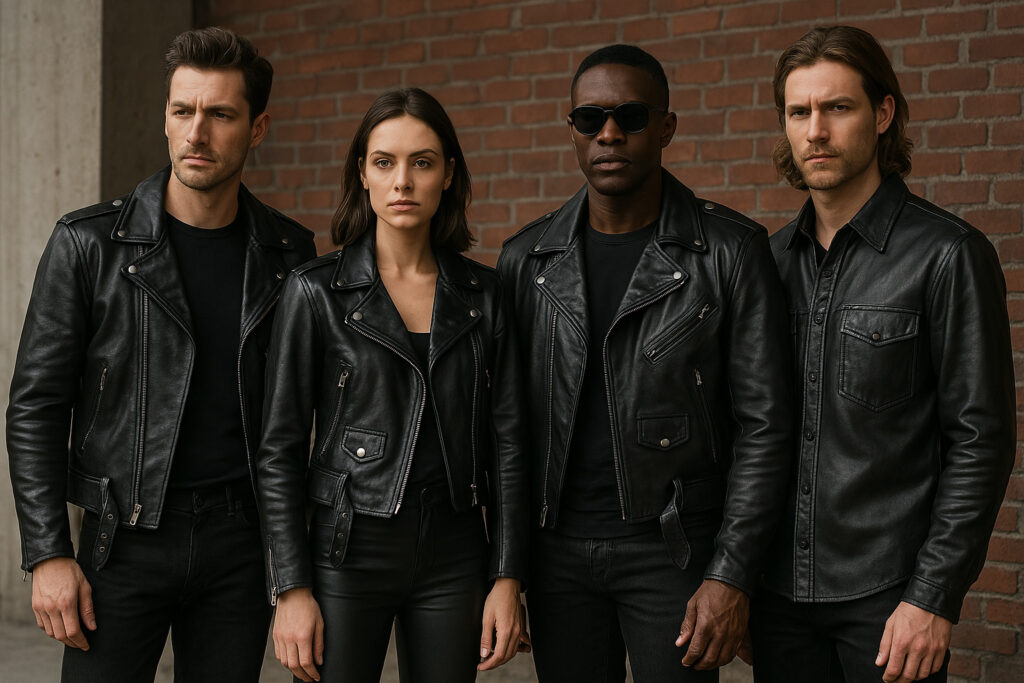Leather clothing has carved out a distinctive identity in American fashion, embodying rebellion, craftsmanship, and individuality. From classic biker jackets to avant-garde runway pieces, leather remains a symbol of status and self-expression.
Origins: Function Meets Identity
Leatherwear in the U.S. has deep historical roots, originally serving functional purposes. In the early 20th century, aviators and military personnel relied on leather jackets for durability and protection. As motorcycles gained popularity, bikers adopted leather gear, not just for practical reasons but also as a statement of defiance.
The 1950s saw Hollywood icons like Marlon Brando and James Dean cement leather’s association with rebellious youth, making it a staple of American counterculture. The raw attitude it conveyed was undeniable—whether on screen or the streets.
The Rise of Leather Subcultures
Leather clothing thrived in several subcultures across the USA:
- Bikers & Rockers – The leather jacket, particularly the asymmetrical motorcycle design pioneered by brands like Schott, became a hallmark of biker gangs and rock legends. It symbolized toughness, independence, and a disregard for convention.
- Punk & Goth – Leather was embraced by punks in the ’70s and goth communities in the ’80s, often customized with studs, patches, and distressing to amplify their rebellious aesthetic.
- Western & Rodeo – Leather vests, chaps, and boots have long been staples of cowboy fashion, blending rugged Americana with practicality.
- LGBTQ+ & Fetish Culture – Leather has played a significant role in LGBTQ+ fashion, particularly within the leather subculture that emerged in the 1960s. Events like International Mr. Leather celebrate the craftsmanship and community built around leather apparel.
Modern Evolution: From Runways to Streetwear
Contemporary designers continue to push the boundaries of leather fashion. High-end brands like Rick Owens, Saint Laurent, Mr Leather Shop, and Tom Ford have redefined leather, merging it with minimalist cuts and bold silhouettes. Meanwhile, streetwear brands have integrated leather into everyday fashion, making it more accessible without losing its edge.
Sustainability has also entered the conversation, with innovations in eco-friendly leather production and vegan leather alternatives reshaping the industry. American consumers are increasingly interested in ethical sourcing, ensuring that leather remains not just a symbol of style but also responsibility.
Conclusion: A Timeless American Statement
Leather clothing in the USA is more than just a material—it’s an evolving narrative of culture, rebellion, and self-expression. Whether on a biker, a fashion runway, or a city street, leather retains its unmistakable presence as a testament to individuality and craftsmanship.

